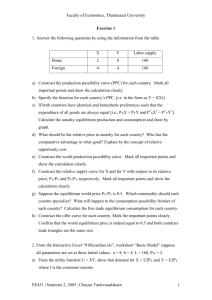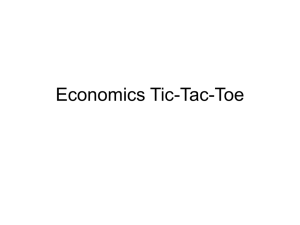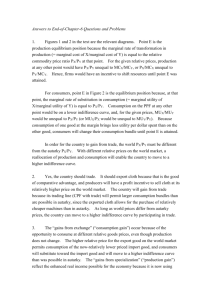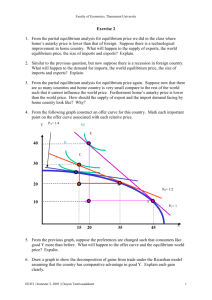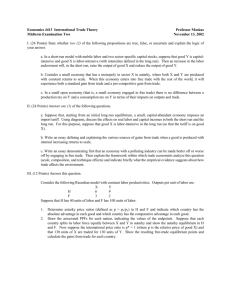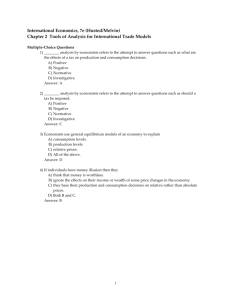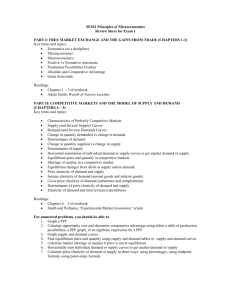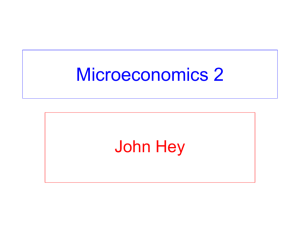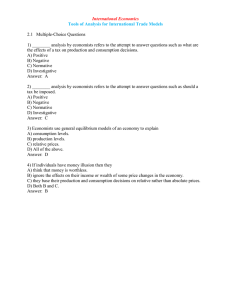lecture 2
advertisement
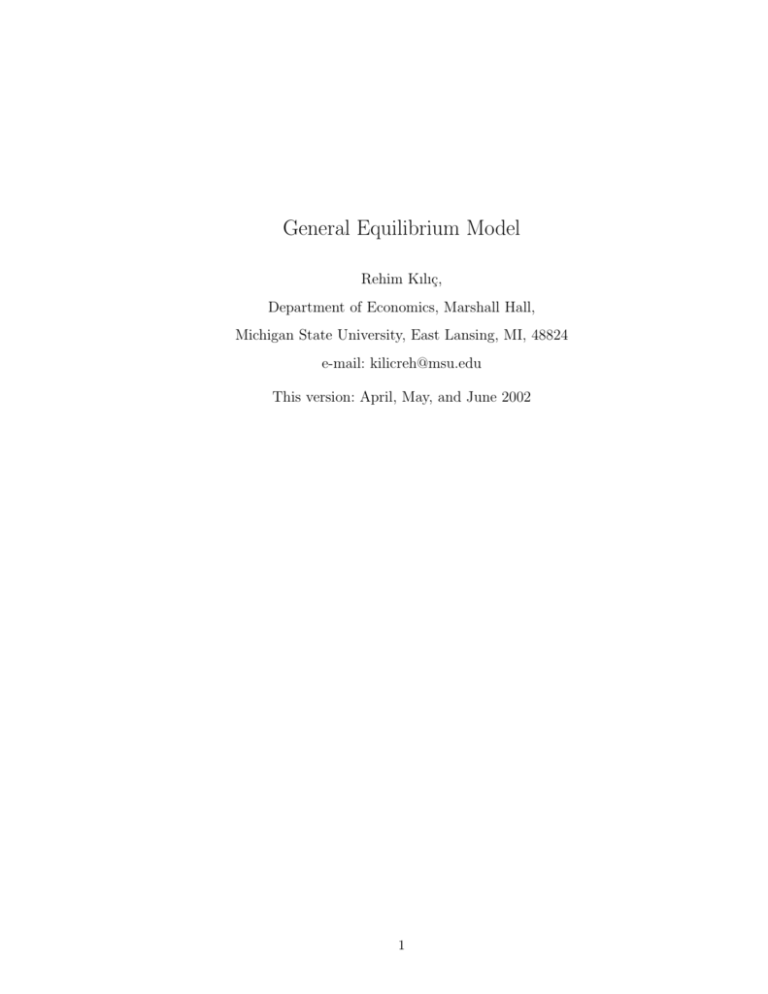
General Equilibrium Model Rehim Kılıç, Department of Economics, Marshall Hall, Michigan State University, East Lansing, MI, 48824 e-mail: kilicreh@msu.edu This version: April, May, and June 2002 1 1 The Model general equilibrium refers to the equilibrium in which production, consumption, prices, and international trade are determined simultaneously for all goods produced and consumed in the economy. 1.1 Assumptions • A1. Economic agents, consumers, and producersfirms- exhibit rational behavior in the sense that given all the available information, consumers maximize utility from consumption, and firms try to maximize profits. • A2. Two countries in the world, A, and B. Two goods, C, and W. Some of each good is consumed in each country. 1 • A3. Consumers and producers when they make decisions about consumption and production look at the real prices not the nominal prices. This assumption excludes the possibility of what is known as money illusion. Money illusion means that economic agents agents make decisions by only looking at some of the prices not all the prices in the economy. We are assuming here agents base their decisions on relative prices not on nominal prices. • A4. In each country factors of production is fixed and the level of technology in each country is constant. Note this does not mean that each country to have the same amount of factor endowments or each have the same level of technology. 2 Under assumptions A1-A4 we can illustrate the supply conditions of a country by PPF. Draw PPF to illustrate the supply conditions in each country. PPF: We can assume that either the economy is subject to increasing OCs or the constant OCs. 3 • A5. Perfect competition prevails in each industries in each country. There are no externalities. We know that under perfect competition firms will maximize their profits when P = M C. Then market prices reflect the true social (opportunity) costs of production. Illustrate this graphically by drawing PPF and price line together. 4 • A6. Factors of production are perfectly mobile between the two industries within each country. This assumption implies that factors of production can freely move between industries when there is a potential difference in factor payments within a country. What does then this suggest for say wages in different industries within a country? • A7. Community preferences in consumption can be represented by a consistent set of community indifference curves. Or alternatively we can assume that there is a representative agent for each country whose indifference curve represents that country’s community indifference curve. 5 2 2.1 Solution of the model Autarky Solution Autarky means self-sufficiency. The country is closed in the sense that she does not trade with the rest of the world. The autarky solution is the solution for a closed economy. Under the assumption of constant OCs we can illustrate the solution graphically as follows. 6 The solution with Increasing OCs: 7 3 Aggregate-National- Supply and Demand Recall the definition of individual supply and demand curves for a particular product. Similarly we can define aggregate supply and demand for a particular product. The aggregate-national- supply curve for a particular product, say W is the locus of points that gives level of aggregate W produced in a country at various relative prices of W. aggregate-national demand curve gives the locus of consumption points a country wants to consume a particular product at different relative prices of that product. 8 The national supply and demand curves can be obtained graphically as follows: 9 Bringing national supply and demand curves together we can characterized the autarky general equilibrium in an alternative fashion as follows: 10 What happens if the economy opens to international trade? To answer this question consider the following situation. 11

